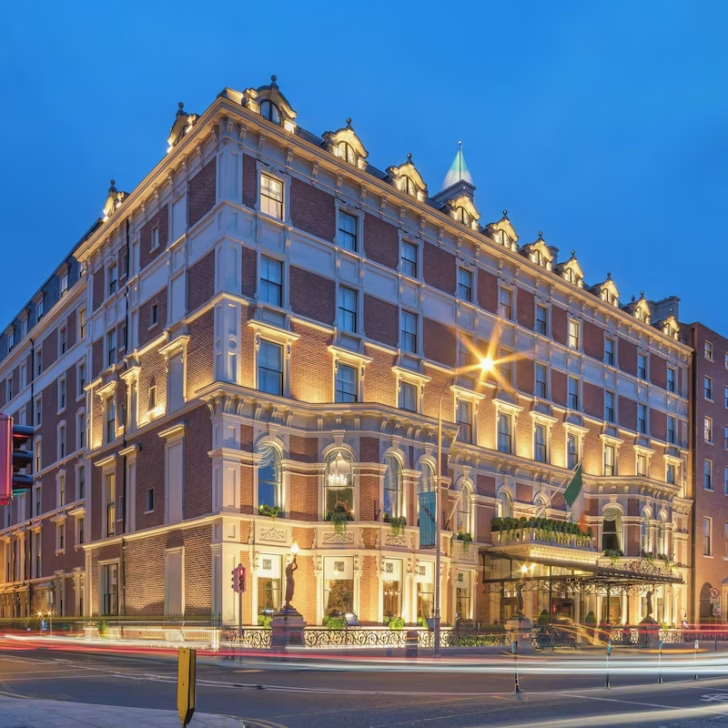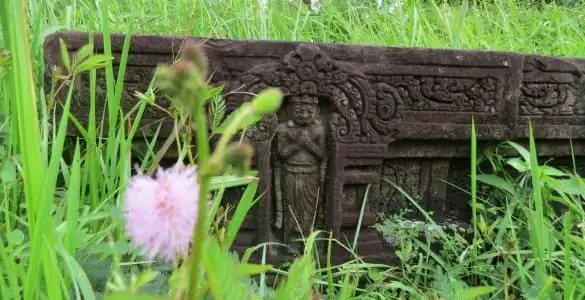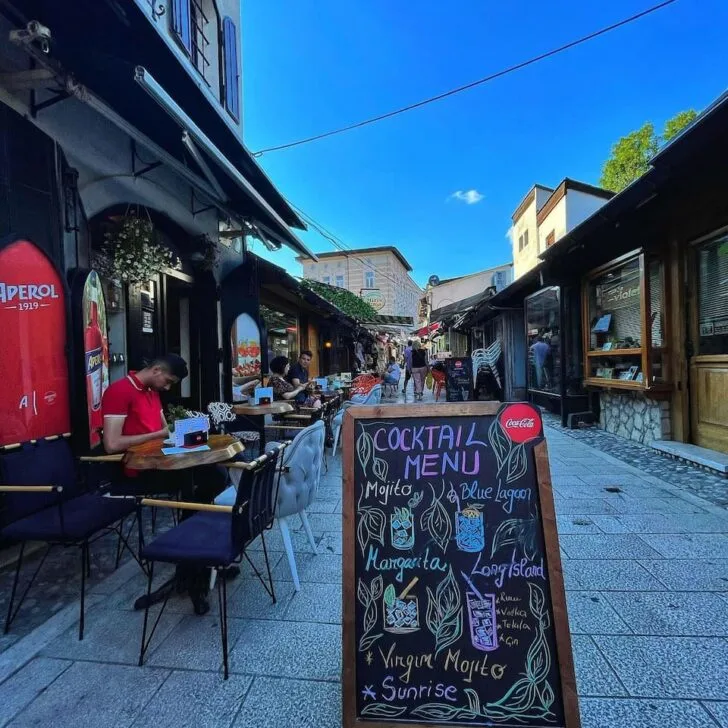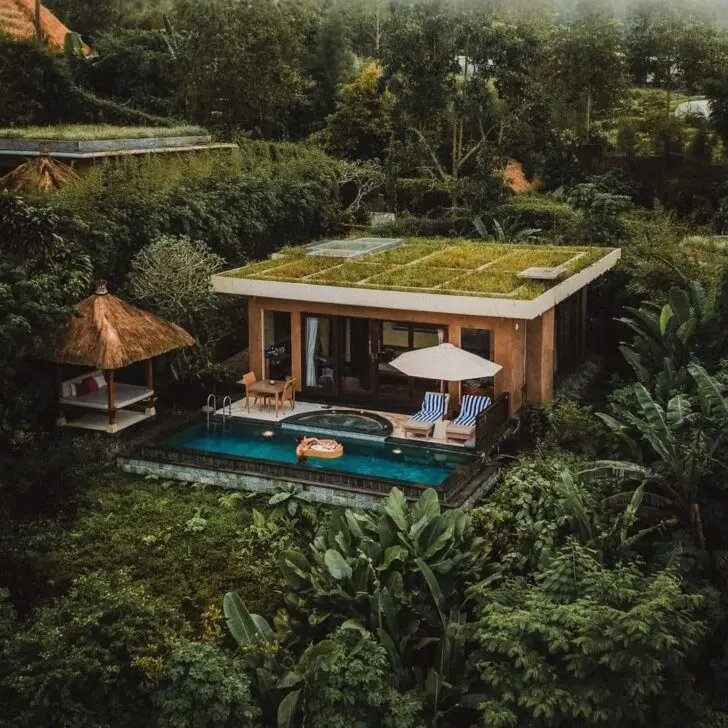We may receive a commission if you make purchases through affiliate links (at no extra cost to you). Read why our approach to travel is different.
Garden Route, in the southern tip of South Africa, is a magical place. It is wedged between the Indian Ocean and two mountain ranges, making it an ideal place for a beach holiday or an adventure-filled trip. The amount of rainfall and tall indigenous forests are the reason for its name; there really are few other places like this in South Africa.
As a visitor to the Garden Route, you might enjoy the mix of comfort and wildness that you find here. On one hand, there are many towns here with good infrastructure, charming farmstall, and fabulous restaurants and wineries. On the other hand, Garden Route is made up of wild ocean waves, babbling brooks, fascinating wildlife, and vast stretches of wilderness. People live here in a multitude of ways, from off-grid communities in the forests to tin shacks in villages and mansions overlooking the ocean. One thing I can say is for sure, though; the locals are friendly, and there to help you have a wonderful visit to this beautiful region.
If you’re thinking of visiting South Africa, I’d strongly recommend including Garden Route as one of your destinations. This 10-day Garden Route itinerary offers one suggestion for how to visit this enchanting part of the country.
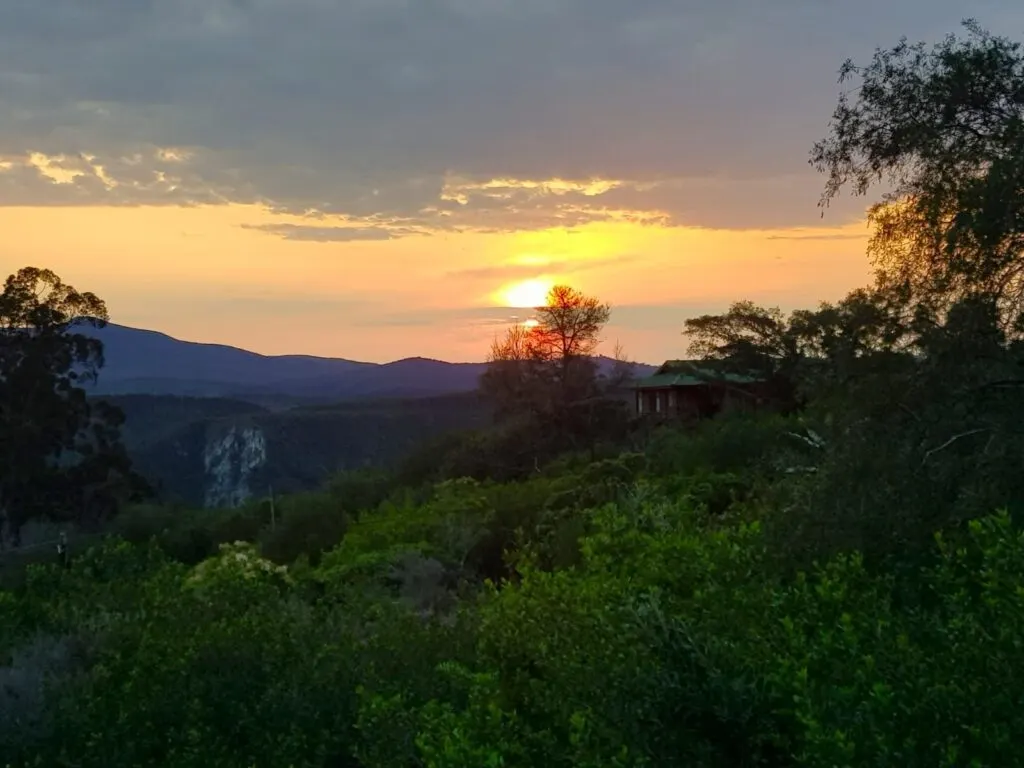
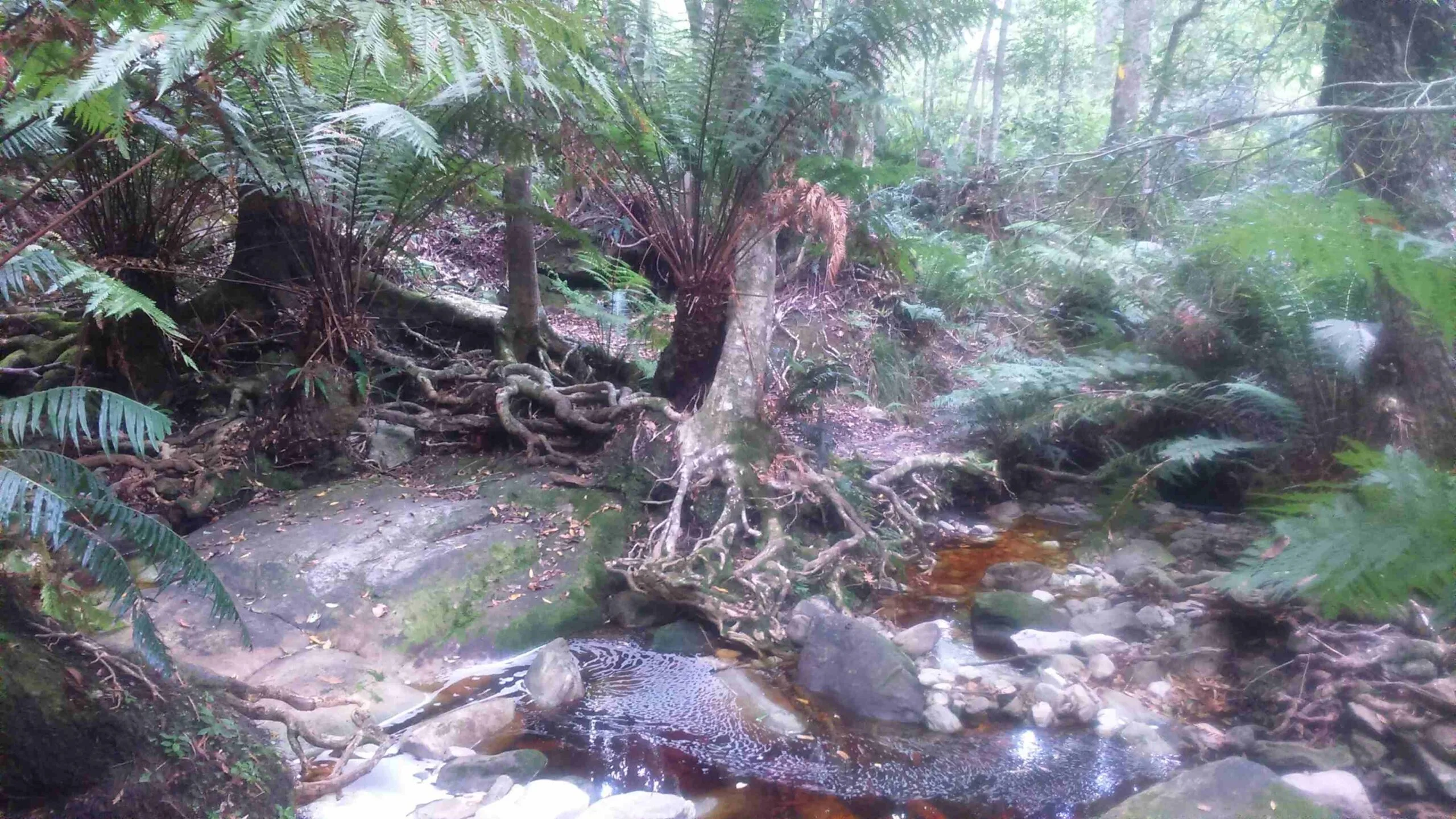
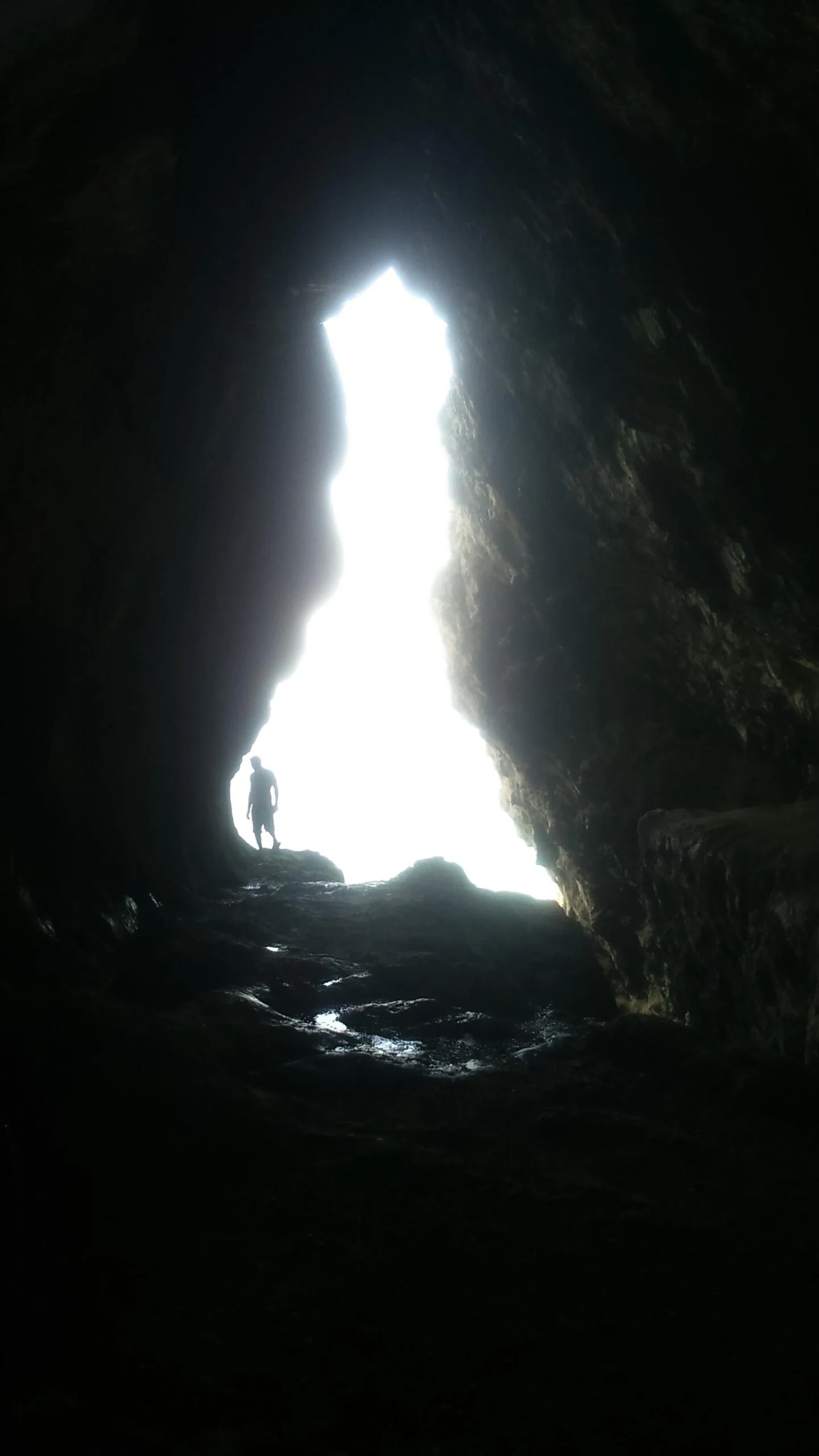
Skip to...
Best time to visit Garden Route
Garden Route is popular for being quite lovely to visit at any time of the year. In the summer, it’s good to be prepared for some intense sun and heat. It can also be quite busy on the Garden Route, especially around Christmas time and in January. Otherwise, summer is of course a lovely season for enjoying the ocean and water-based activities.
In the winter months, it does get a little chilly here. Mornings may be frosty, and overall, it’s good to pack along a beanie and warm clothes, even though the days are generally pretty warm. Late winter, early spring is a wonderful time to admire wild flowers, and you might catch the gorgeous aloes flowering.
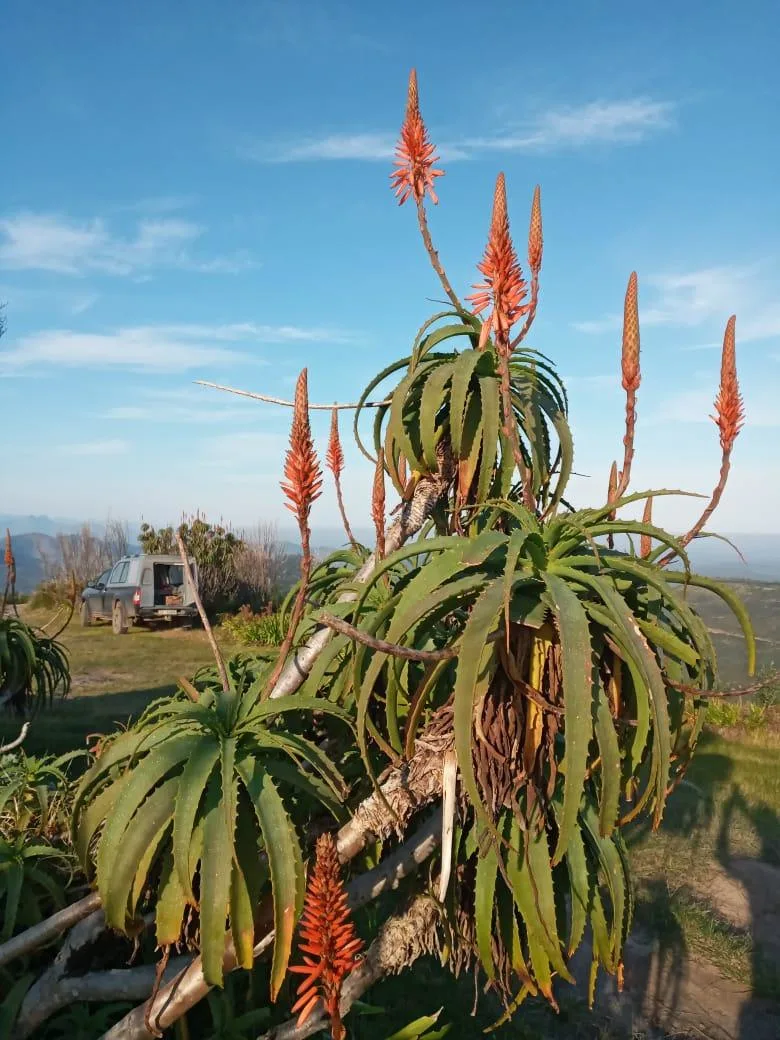

Getting there and getting around
To get to Garden Route, you can first fly to either Cape Town or Johannesburg. From one of these cities you could drive down or take an in-country flight to George. George is close to Mossel Bay, which is the start of this suggested 10-day Garden Route itinerary.
Many people enjoy renting a car to explore Garden Route, to be able to visit places you wouldn’t get to by public transport. There are, however, also local mini buses that have quite a good coverage and that are cheap to use. They do take a bit of patience to travel with, though. There are also long-distance bus companies that can take you from town to town, or you could use Baz Bus. This company does pick up and drop off on the Garden Route. You could then organize a local taxi or shuttle to get from your bus stop to your accommodation – sometimes your accommodation is able to help with that. Finally, bicycling can be fun on Garden Route, as well; however, the bicycle roads are pretty nonexistent, unfortunately.
Days 1-2: Mossel Bay, George, and Wilderness
Visit the origins of humankind in Mossel Bay
I’d recommend Mossel Bay as the place to start your Garden Route adventure. Mossel Bay has a rich history, of the original inhabitants of this lush coastal region and of the descendants of the Europeans who’ve been around for the last five hundred years or so. Bartolomeu Dias Museum is a great place to explore the latter – it is home to a 500-year old Post Office tree, and a replica of Dias’s ship. Whereas, to take a trip to the origins of humankind, I’d recommend booking a tour to visit Pinnacle Point caves. They contain fascinating archaeological finds that shed light to behaviors of early humans of this area.
It is also incredibly beautiful in the surroundings of Mossel Bay. There are amazing coastal walking trails through fynbos vegetation and past gorgeous rock faces. One of the loveliest trails here is St Blaize trail which takes you past the famous Cape St Blaize lighthouse. You could stay over at Mossel Bay before continuing on your journey; Betty’s Boutique Hotel is one great option for accommodation.

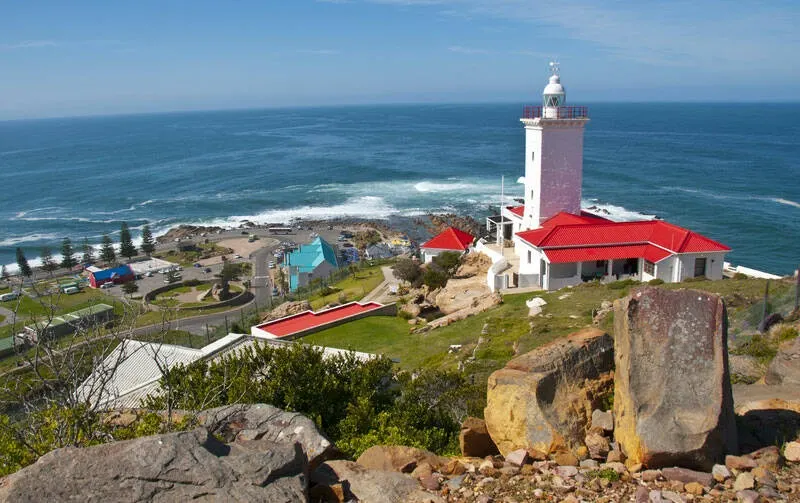
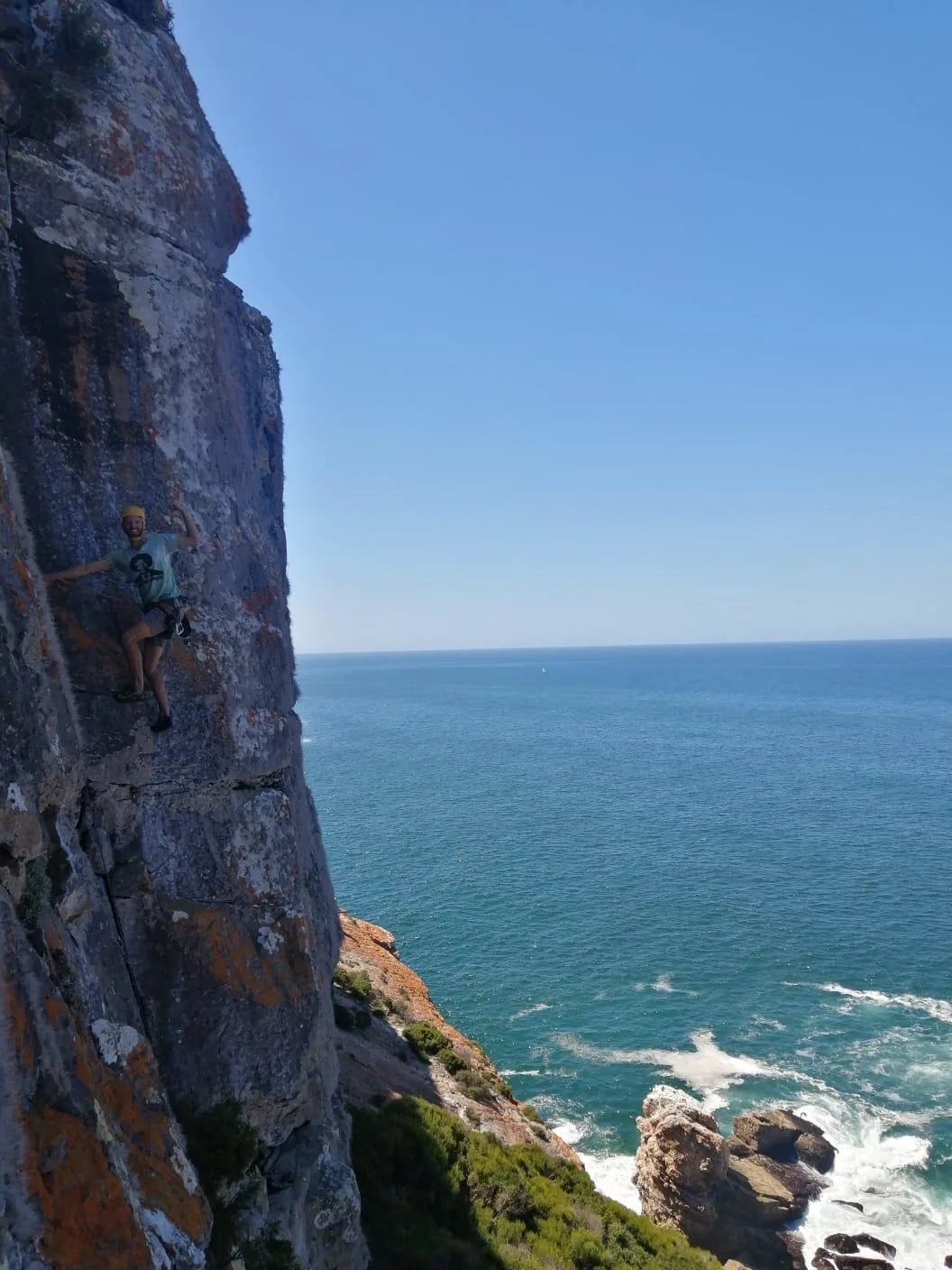
George, the largest city on the Garden Route
On your way from Mossel Bay to Wilderness, you’ll pass by George. It is the largest city on the Garden Route, and it has a fairly well-connected airport as well as malls, a cinema, and a busy commercial city centre. George is close to the ocean, and it is also located under some of the highest peaks of the Outeniqua mountain range: Cradock peak and George peak.
If you pass by George on a Saturday, there’s a lovely Outeniqua farmer’s market just outside of the city. Otherwise, I’d highly recommend taking the small detour to Wilderness via the 7 Passes Road. This road preceded the national road, N2, as the main way to get from place to place on the Garden Route. Nowadays, it is a narrow lane through gorgeous temperate rainforests, with historical bridges still crossing the several mountain creeks of this area. Right at the end of the road, before you reach Wilderness, you can visit a place called “The Map of Africa”. This lookout offers a view over the surrounding hills, river, and forests that, seen from this particular point, seem to form the map of Africa.
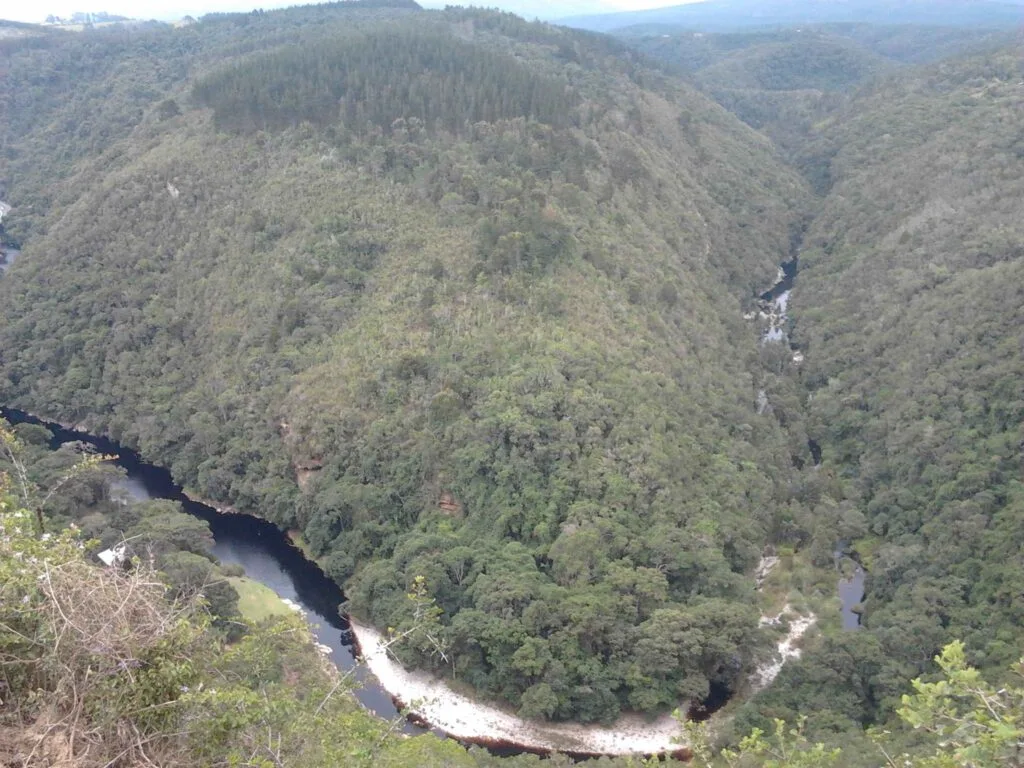
A nature stay in Wilderness
I’d recommend staying in Wilderness for at least one night. It is a small village about 15 kilometres from George. Wilderness consists of farms and small settlements all surrounding a small and tree-covered but vibrant town centre. There are some fantastic cafés and restaurants in Wilderness. My favorites include the vibey Ilali with great pizzas, cocktails, and frequent live music, and the classy Blue Olive. Meanwhile, The Green Shed is a rustic, atmospheric place for enjoying a coffee and a treat. I can recommend Wilderness Manor as one wonderful place to stay.
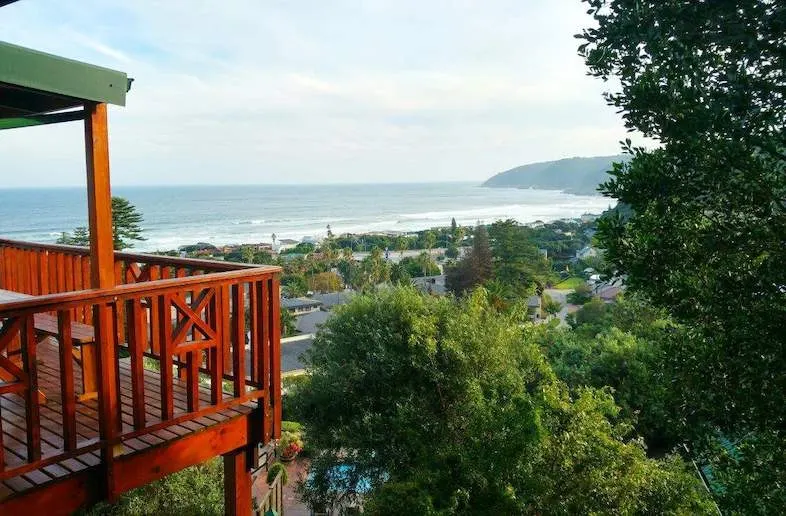
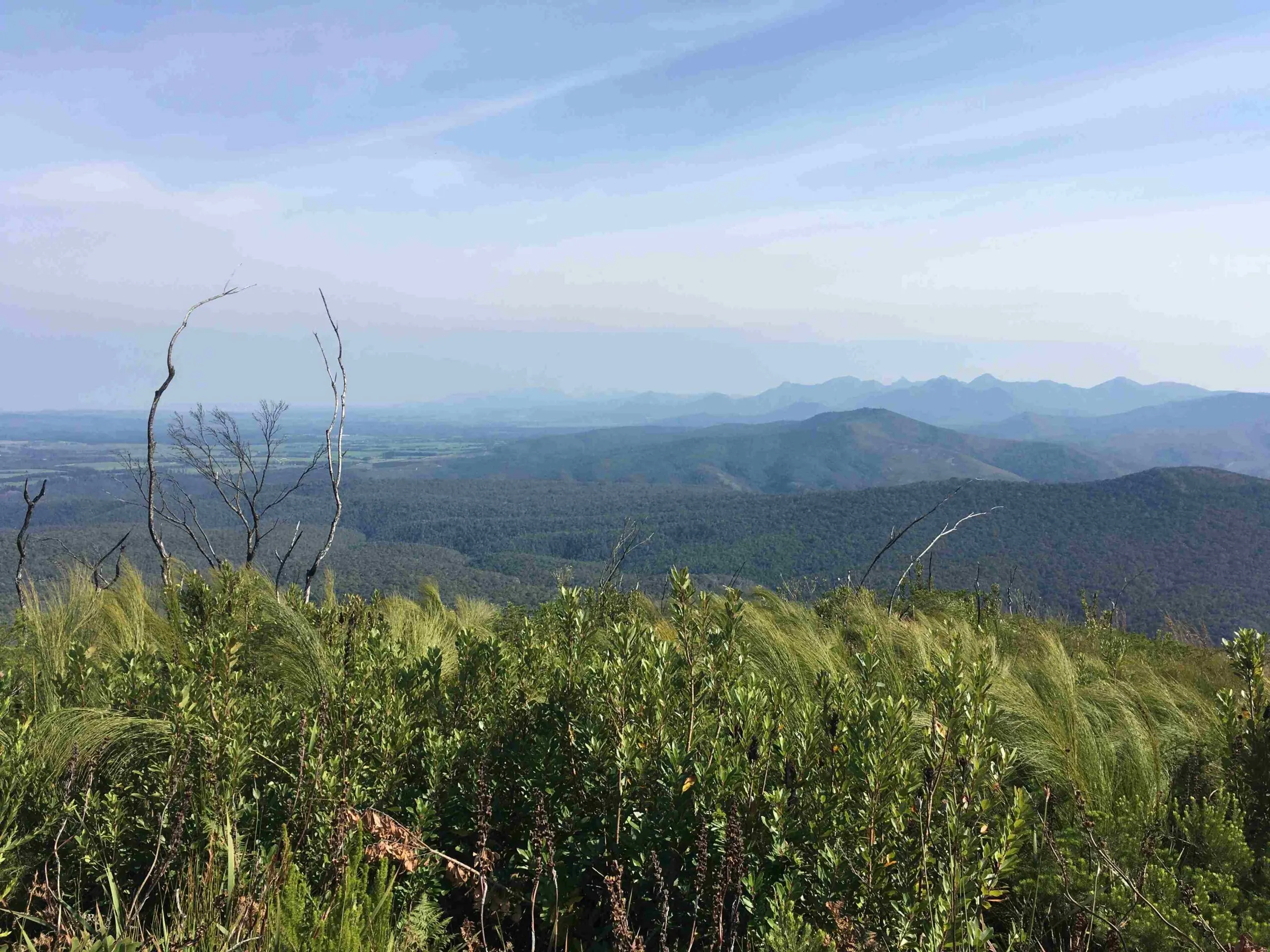
The best thing about Wilderness is, I think, its beaches and nature. The surroundings of Wilderness belong to the Garden Route National Park, which encompasses various natural areas between Wilderness and Stormsriver. In Wilderness, the best way to visit the reserve is by hiking the Half-Collared Kingfisher Trail, or the Brown-Hooded Kingfisher Trail. Both walks take you through indigenous vegetation, and you might spot birds such as the gorgeous Knysna loerie, snakes, monkeys, and other animals. The trails also include some stunning rock pools, great for dipping in after a hike on a warm day.
Travel tip: It is worth noting that most nature trails in South Africa are managed by non-governmental conservation organizations, and they include an entry fee. The amount of the fees vary, but international fees are generally a bit higher than locals’ fees. It is worth it, though; the nature on the Garden Route is unique and mesmerizing.
Days 3-5: Knysna and surrounds
Sea, skies, and slow life in Sedgefield
Sedgefield is a small, peaceful town between Wilderness and Knysna. I’d recommend a little visit here on your way. The town’s motto is “Slow life”, and this is reflected in the many creative mosaic tortoises scattered around Sedgefield. The town is located by a river that runs into the sea through a beautiful, biodiverse lagoon, and there are some great beaches around, as well. I especially enjoy Myoli beach, with kilometres of sandy whiteness to explore. If you’d like to try something adventurous, Sedgefield is a great place to go paragliding. And, if you come past on a Saturday, there’s a fantastic farmers and craft market that takes place on the town’s outskirts every week.
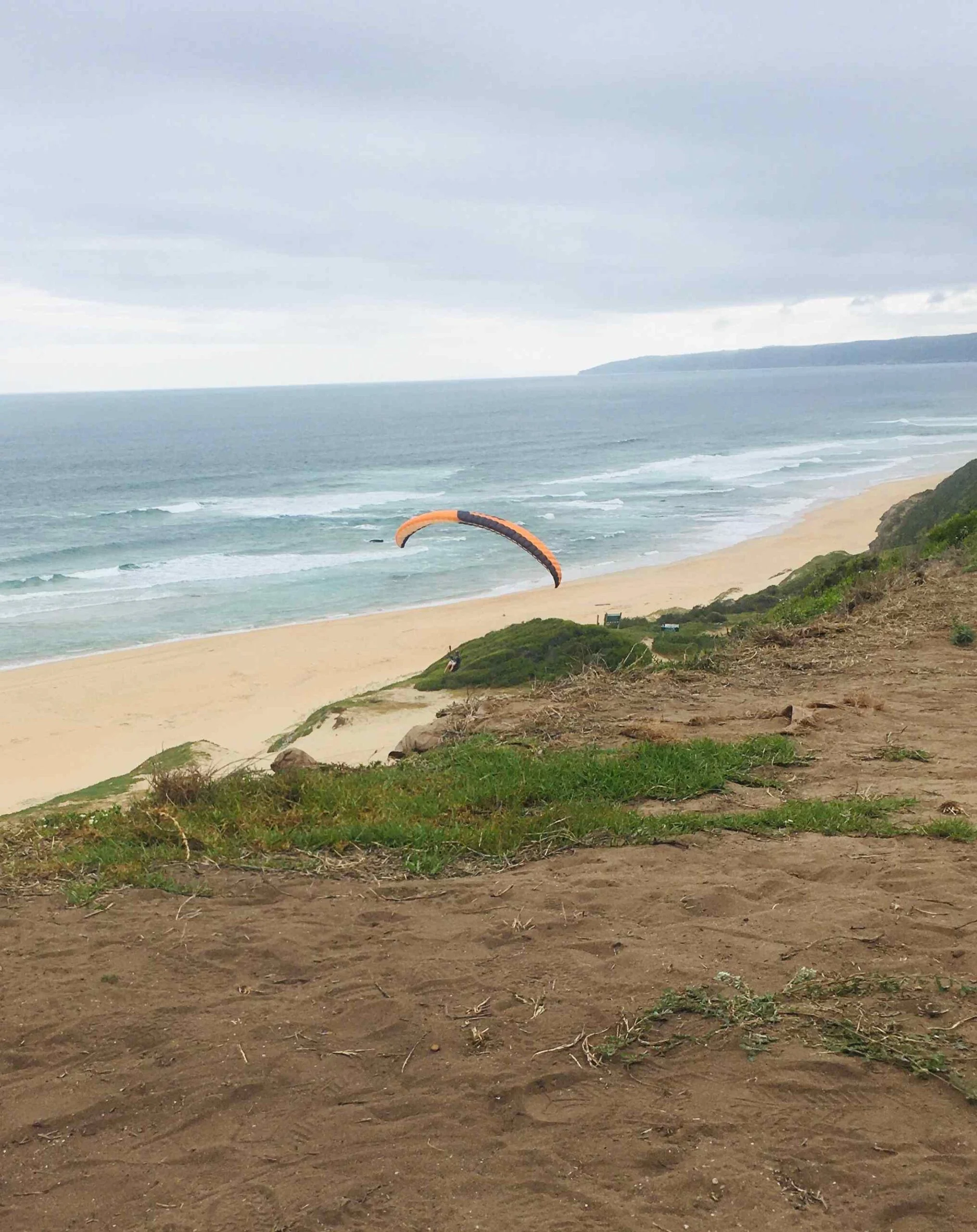
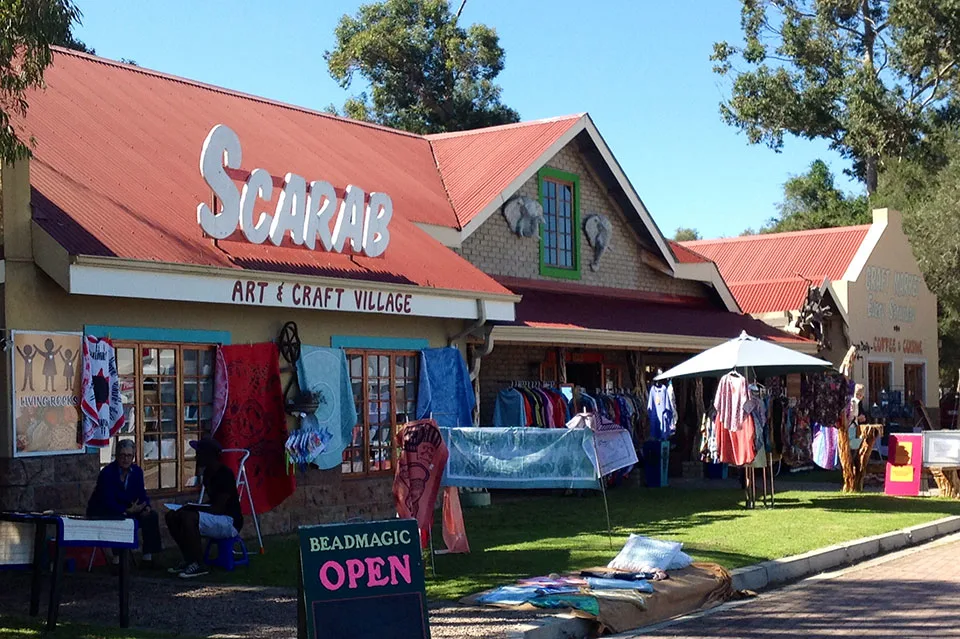
Knysna: Place of fun, forests, history, and adventure
Knysna has traditionally been known for its gorgeous gallery forests, a history of wood industry, and Knysna’s harbor. The city was famed as a relaxed hippie-haven still a couple of decades ago, but these days central Knysna is rather busy, with shopping centres and busy roads. However, the way of life in Knysna is still fairly laid-back. I’d recommend spending at least two nights in this region. There’s no lack of options in terms of accommodation in Knysna, but if you’d like to stay somewhere central and luxurious, I’d recommend Protea Hotel by the Waterfront. Knysna Inn, also centrally located, is a great budget option.
Knysna’s shopping areas and waterfronts
Whilst in Knysna, I can recommend popping into Knysna Mall to see some local shops or to enjoy a coffee and muffin at the Mugg & Bean. Visiting the taxi rank area nearby is worth it just to experience something more African-like in terms of atmosphere. Knysna’s rastafarians sell their traditional roots and medicines here, and you can catch an affordable taxi ride to many nearby locations. I’d just implore you to take good care of your belongings when visiting busy areas like this.
Because Knysna is located on the Knysna River estuary, there are lots of stunning coastal locations to visit here. Knysna’s Waterfront is great for shopping and dining. My favorite restaurants in Knysna, the seafood restaurant 34 Degrees South and the charismatic, little L’Opera, are at the Waterfront. Meanwhile, Thesen Island is a well-kept residential and business area with some interesting galleries and restaurants. You’ll find île de païn here, a most lovely artisanal bakery and café. I also recommend taking a drive to Knysna Heads, which is a beautiful place to visit. It consist of two formidable rock faces at the place where Knysna River empties into the Indian Ocean.
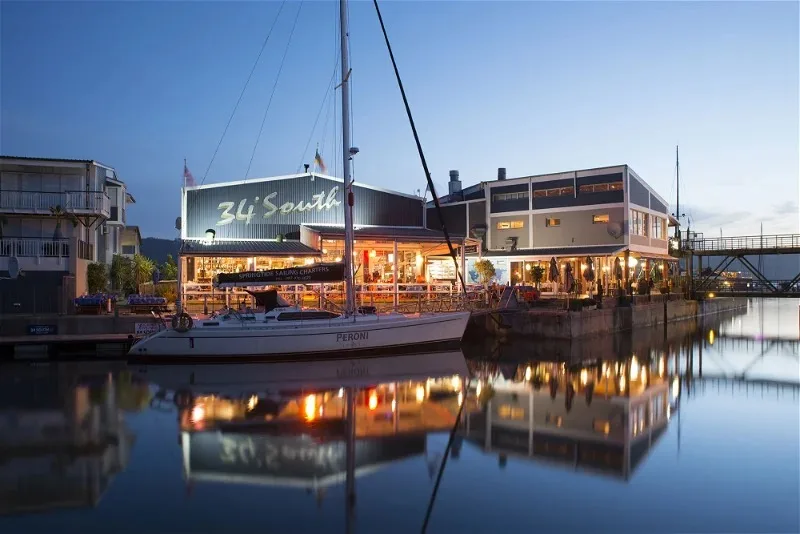
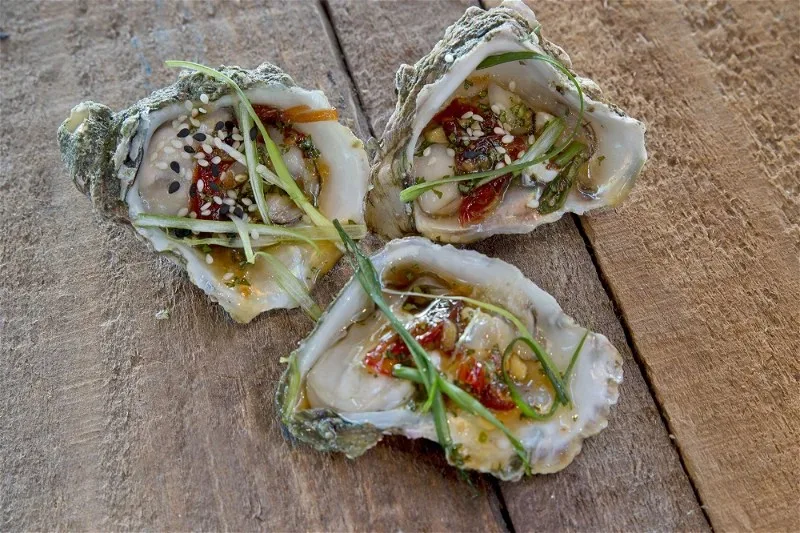

Nature, hikes, and markets
One of the best things to do in Knysna is going on a whale watching tour. The best time to do this is during the whale migration between June and November. You may then spot whales such as humpback whales, southern right whales, or orcas. During other seasons, you can still spot lots of sea life, including dolphins, seals, and sea birds.
A visit to Knysna wouldn’t be complete without a hike in an indigenous forest. The best place for doing this is perhaps Circles in the Forest in Rheenendahl, a little outside of Knysna. You can do a shorter or a longer hike here, and both allow you to appreciate the towering indigenous forests of this afromontane region. There is a lovely Tottie’s Farmers Market open in Rheenendahl every Sunday; it is well worth visiting for lunch or for buying some souvenirs.



Otherwise, there are also some stunning hikes in indigenous forest in Harkerville area, towards Plettenberg Bay. And, if you would like to see elephants, Knysna Elephant Park is a great option. They house rescued and orphaned elephants in natural-like surroundings. I love how you get to interact closely with these majestic animals and learn more about their conservation at the park.

Days 6-8: Plettenberg Bay & The Crags
Explore Plett town
The first foreign inhabitants of Plettenberg Bay, the Portuguese, landed here in the 16th century. They named the bay Baia Formosa – the beautiful Bay. When looking out from Plett town over the sea and towards the faraway mountains, it is easy to understand why. Plettenberg Bay, by the Indian Ocean, is scattered over low hills of indigenous fynbos and forest vegetation. Two rivers run through Plett to the sea, the larger Keurbooms River and the smaller Bitou River. The rivers’ estuary is full of fascinating life, and greatly enjoyed by locals and holiday makers alike. Meanwhile, the town is surrounded by stunning nature and long, sandy beaches. It is no wonder that Plett is the fastest growing town of the Garden Route, and that it attracts visitors from all over the world.
Plett town has great infrastructure, some amazing restaurants, and fascinating little shops and farm stalls. My favorite restaurants in Plett include Barrington and Surf Café. On Wednesdays, there’s a lively organic food and craft market at Old Nick Village. At this shopping complex you can also visit a textile production mill that promotes sustainability and produces most beautiful fabrics and clothes. As for accommodation, you have plenty of options in Plett. Some of my favorites include Bayview Hotel, in central Plett, and Sky Villa Hotel, with views over the surrounding area.


The magnificent Robberg Peninsula
While visiting Plett, I’d certainly recommend visiting Robberg Peninsula. This geographic feature juts into the ocean close to central Plett, and it is connected to the mainland by just a narrow stretch of land. On Robberg, you can do shorter walks or a longer, 8-kilometre hike around the peninsula.
I love the varied terrain here; you walk through dunes, over rock faces, and through beautiful fynbos vegetation. Robberg is home to one of the largest Cape fur seal colonies of the Western Cape. It is most fun observing the seals frolicking in the blue waters below. You can also often spot sharks, dolphins, or whales from Robberg. To add to the fascination of Robberg Nature Reserve, there are also some caves that you can explore where people used to live thousands of years ago.

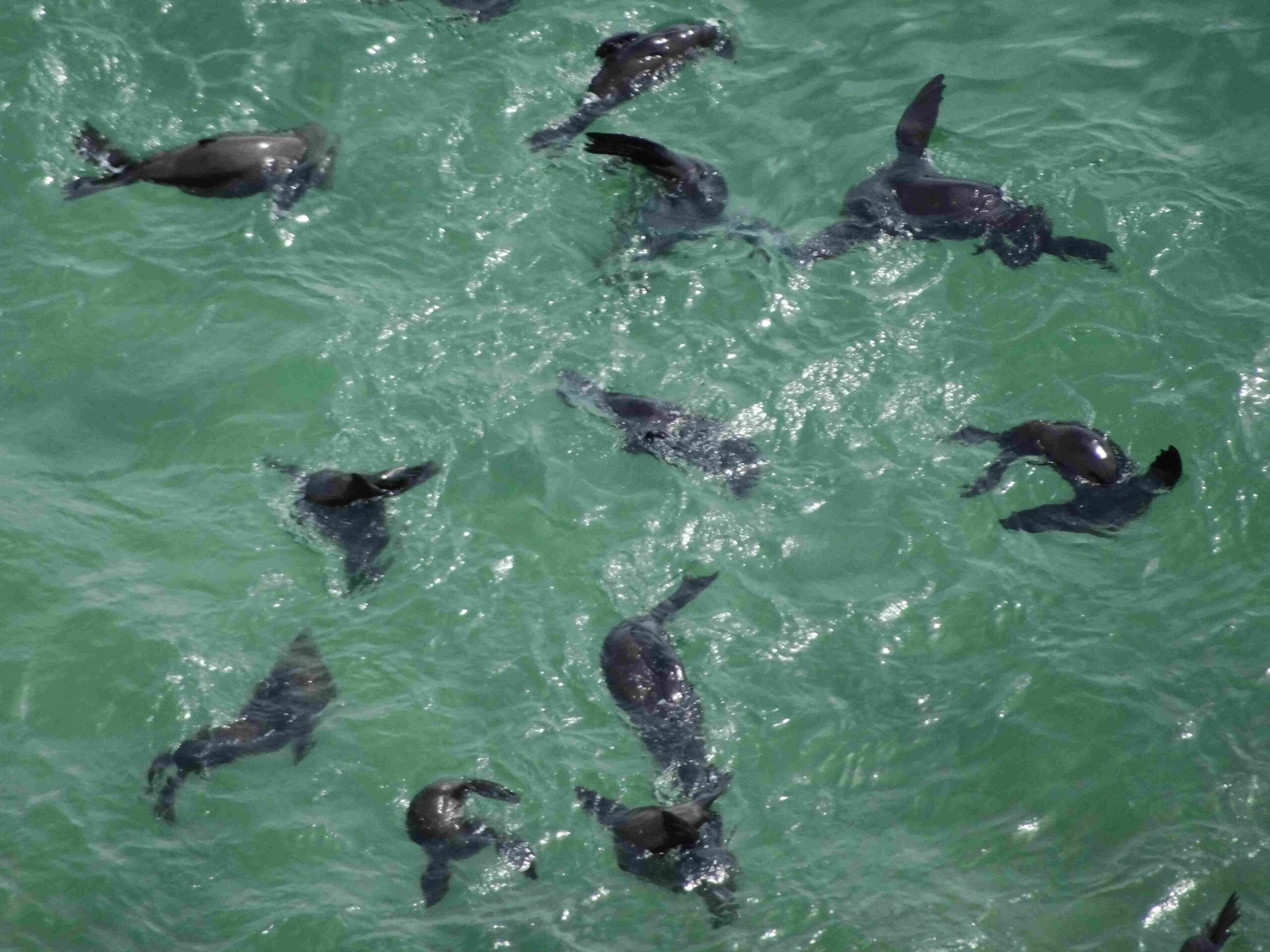
Peaceful Crags
About 20-30 kilometres from Plett you’ll find Crags and Nature’s Valley, both still part of Bitou Municipality, like Plettenberg Bay. But, while Plett provides a comfortable town and beach life experience, the Crags and Nature’s Valley offer amazing nature experiences and peaceful surroundings. I’d recommend staying at one of the lovely guest houses of the Crags, such as Trogon House or Africamps, and exploring the area for a day or two.
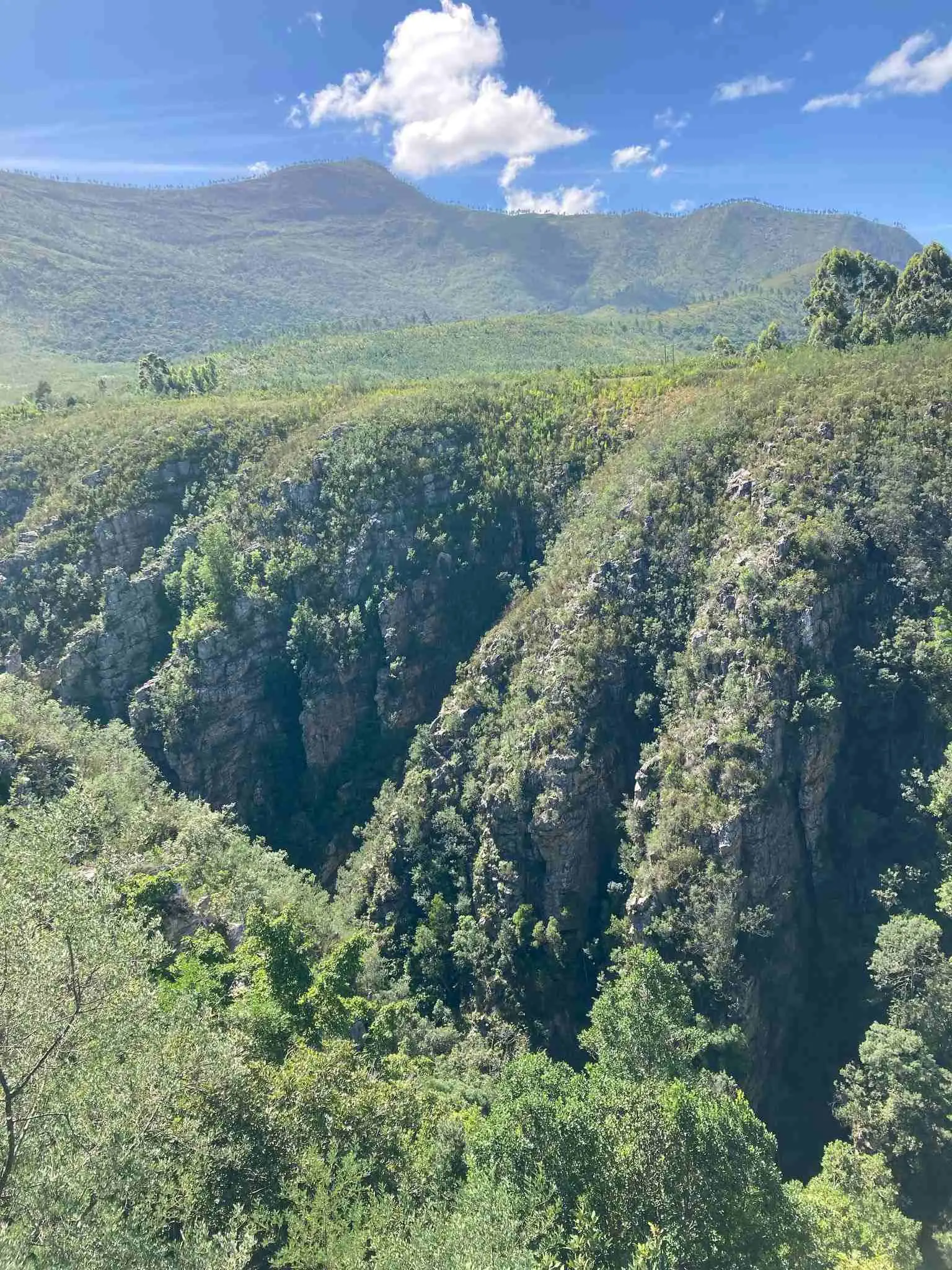
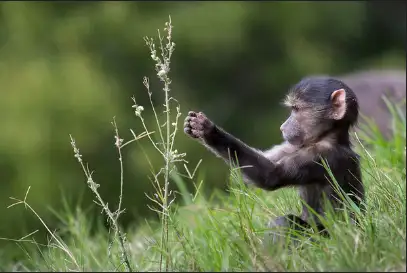
The Crags is known for its many animal sanctuaries. I enjoy visiting Monkeyland and Birds of Eden to learn about local wildlife and rescued animals. At Tenikwa and Jukani you can see larger animals such as lions and leopards. Crags also has several amazing wineries these days, such as Kay & Monty Vineyards or Bramon Winery. For shopping, Peppermill complex is the place to go. Their mohair shop sells amazing wool products and ceramics, and Langalapu next door sells unique clothes and crafts. Peppermill restaurant is also a great place to have lunch. And, if you’d like to experience something really adventurous, AfriCanyon at the same complex offers canyoning tours in the nearby ravines.
For those that are yearning a night out, there’s a very vibey small tavern in the local Kurland Village – just be sure to park your car right by the entrance where it will be guarded. Villa Villekula is another beautiful place for dinner. They serve home-made buffets and meals from Wednesday to Saturday in a cozy setting. Meals need to be booked in advance.
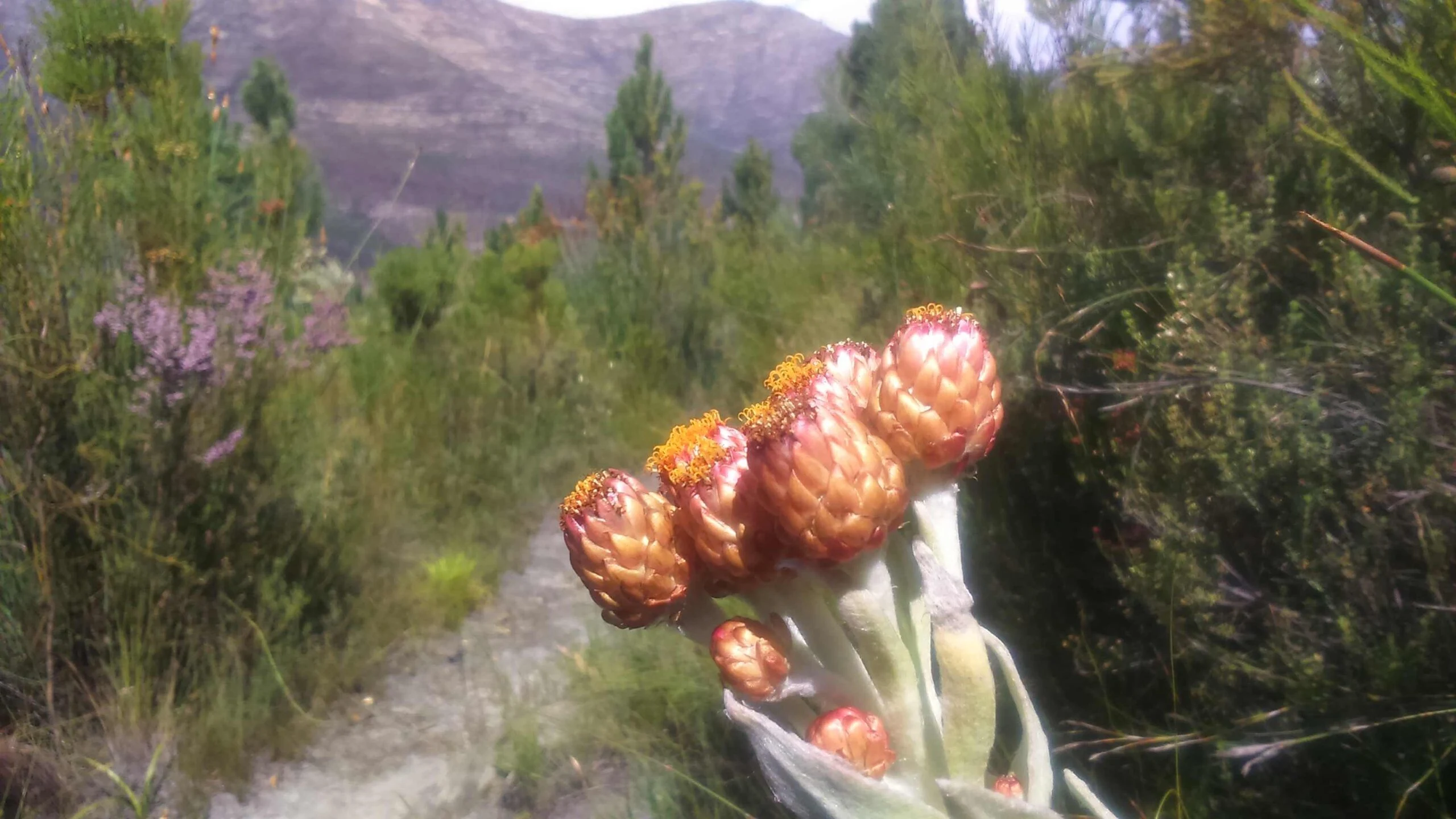
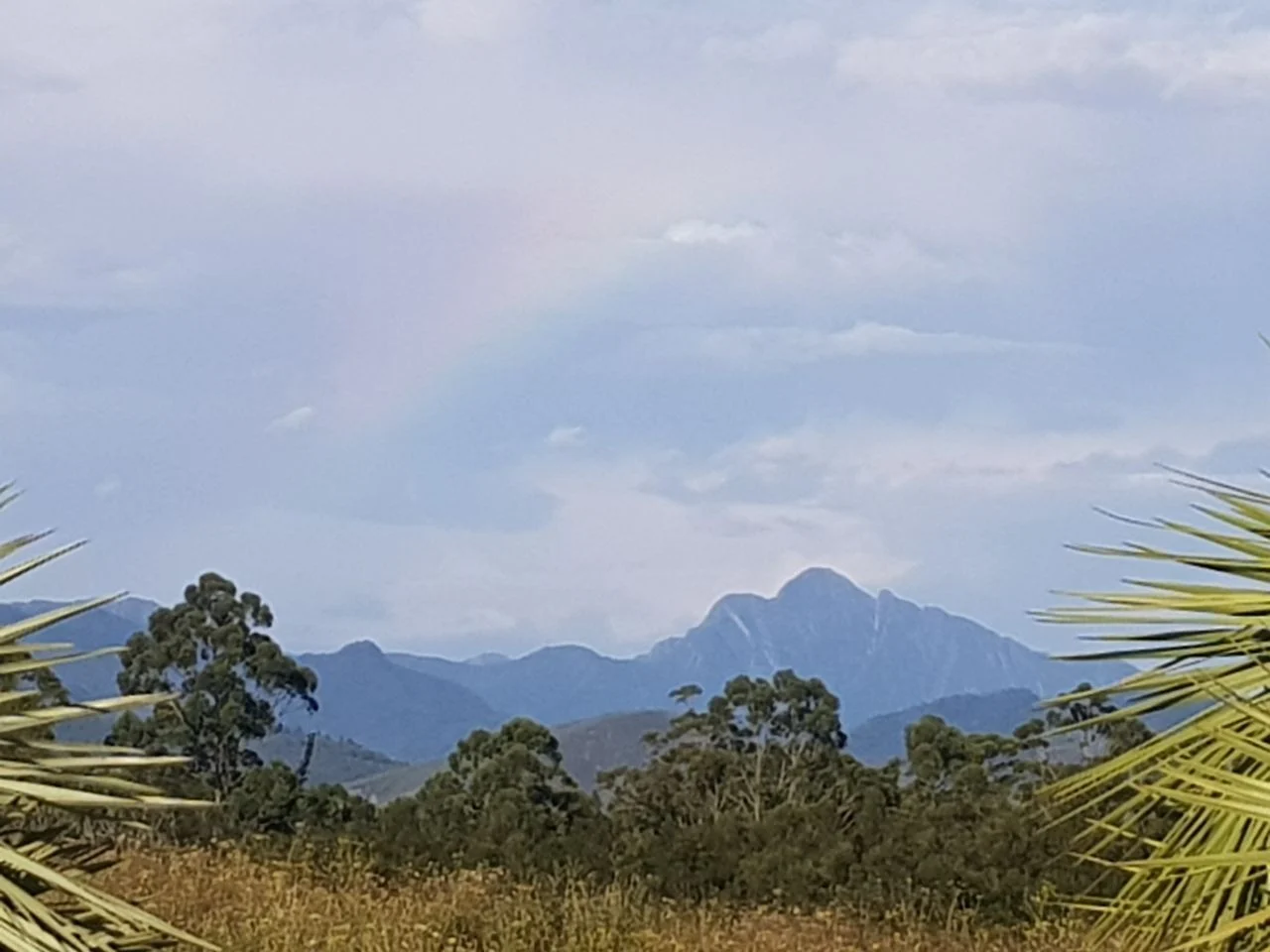

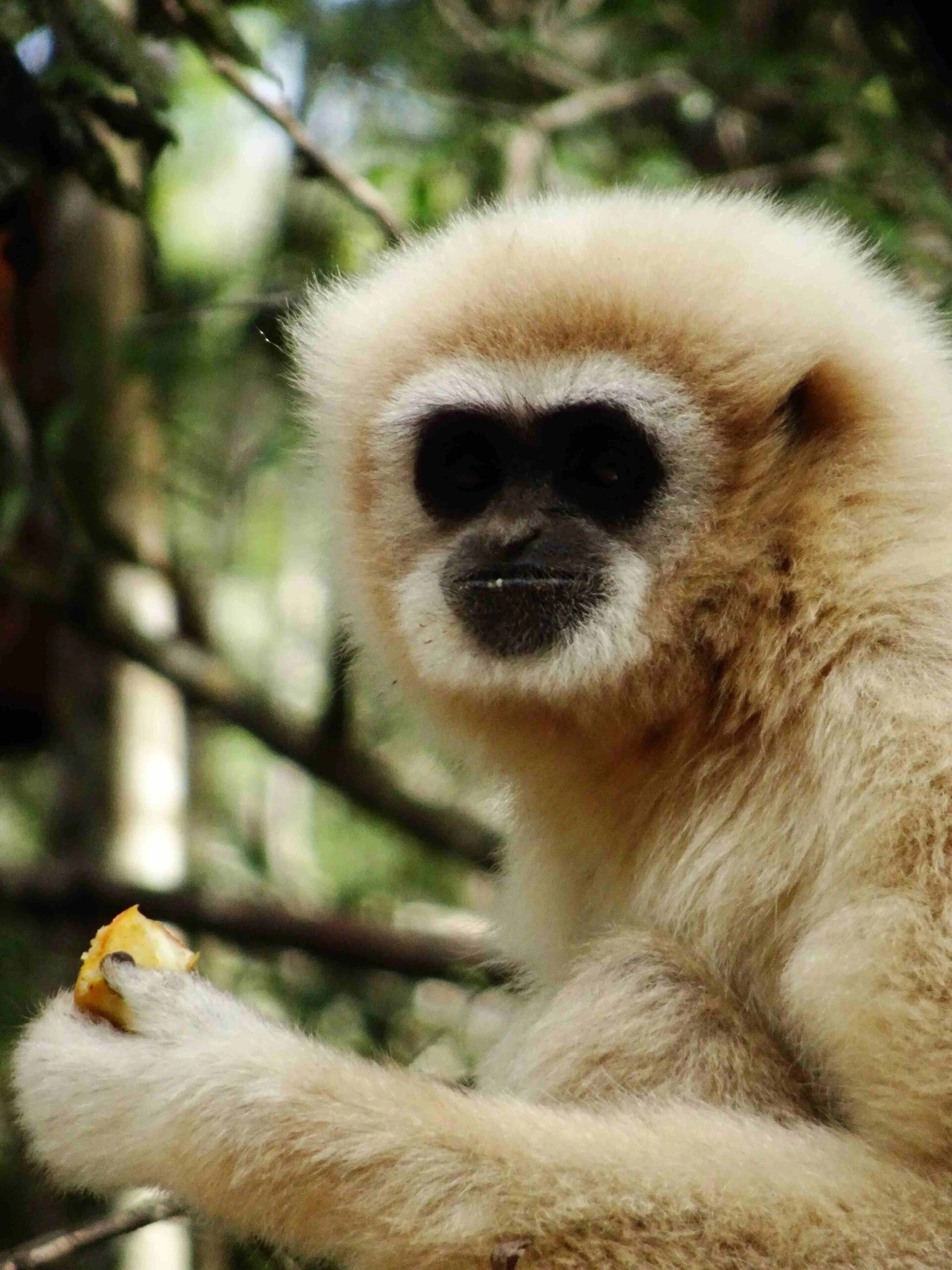
Gorgeous beach and nature experiences
One of my favorite places in the world is Nature’s Valley, 10 km from the Crags. This coastal village is immersed in the indigenous forest. There is one restaurant and a little shop there, and several entrances to the pristine beach.
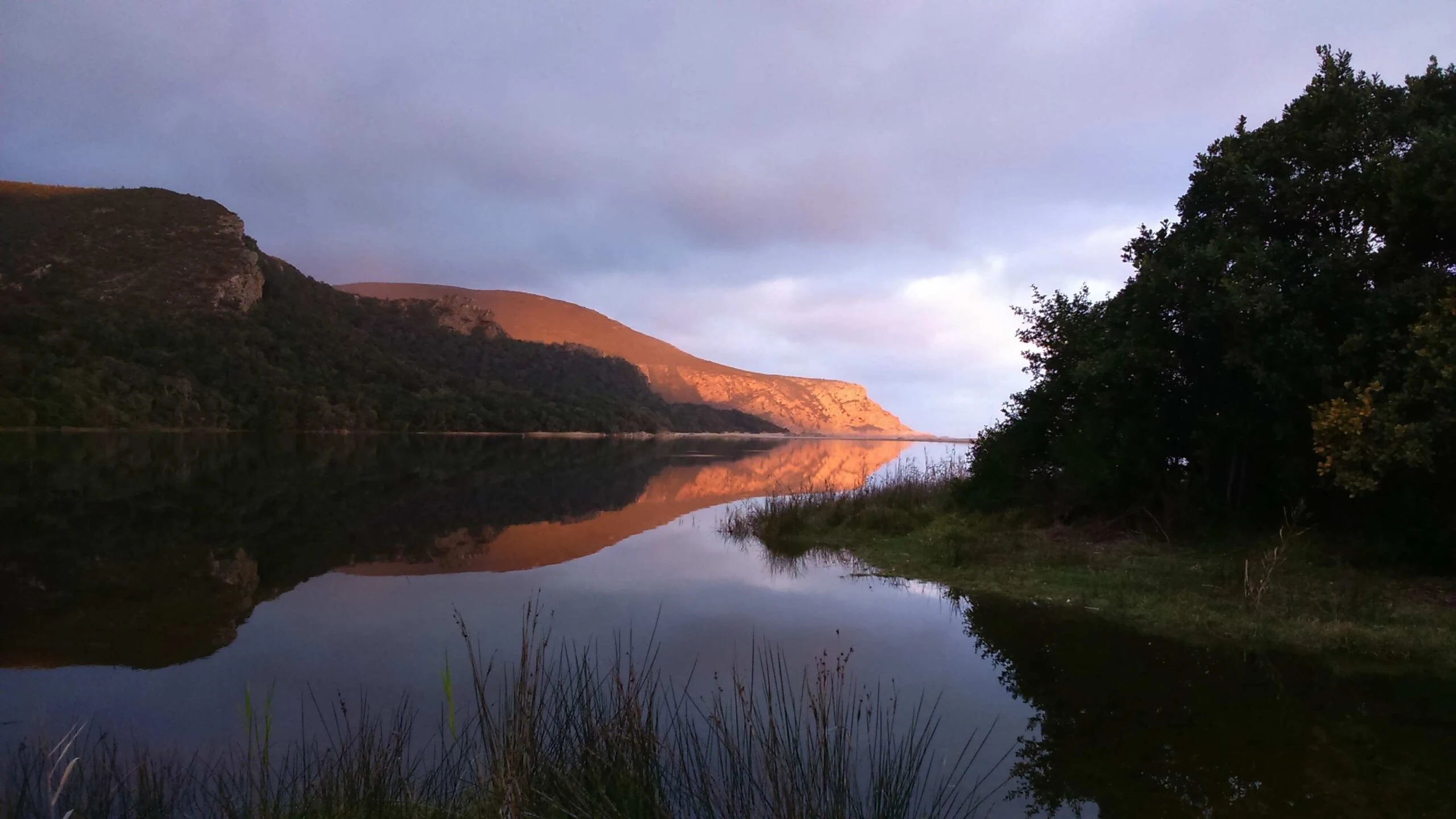
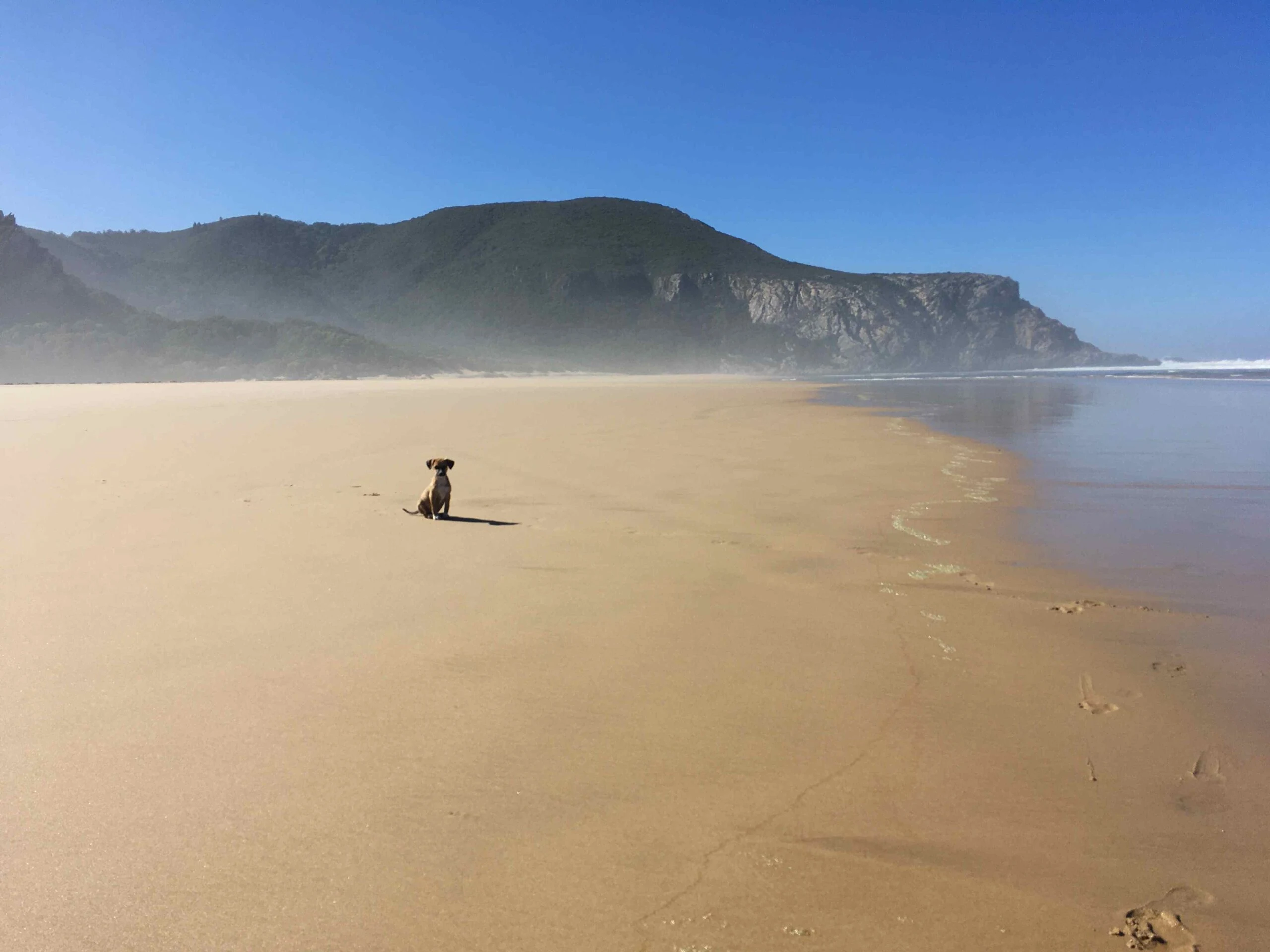
You can do some amazing hikes here. I’d recommend walking up the Kalanderkloof hike just a little bit, to view the towering yellowwoods that guard the village entrance. It is common to spot baboons, vervet monkeys, bushbuck, and other wildlife here. A walk to Salt River mouth is also magnificent and only takes about half an hour one way, from the village shop. On the way to Nature’s Valley, there’s a most charming farm stall, Nature’s Way. They sell freshly baked goods, milk products, jams, and other gifts, and you can enjoy a lovely snack or a lunch here.
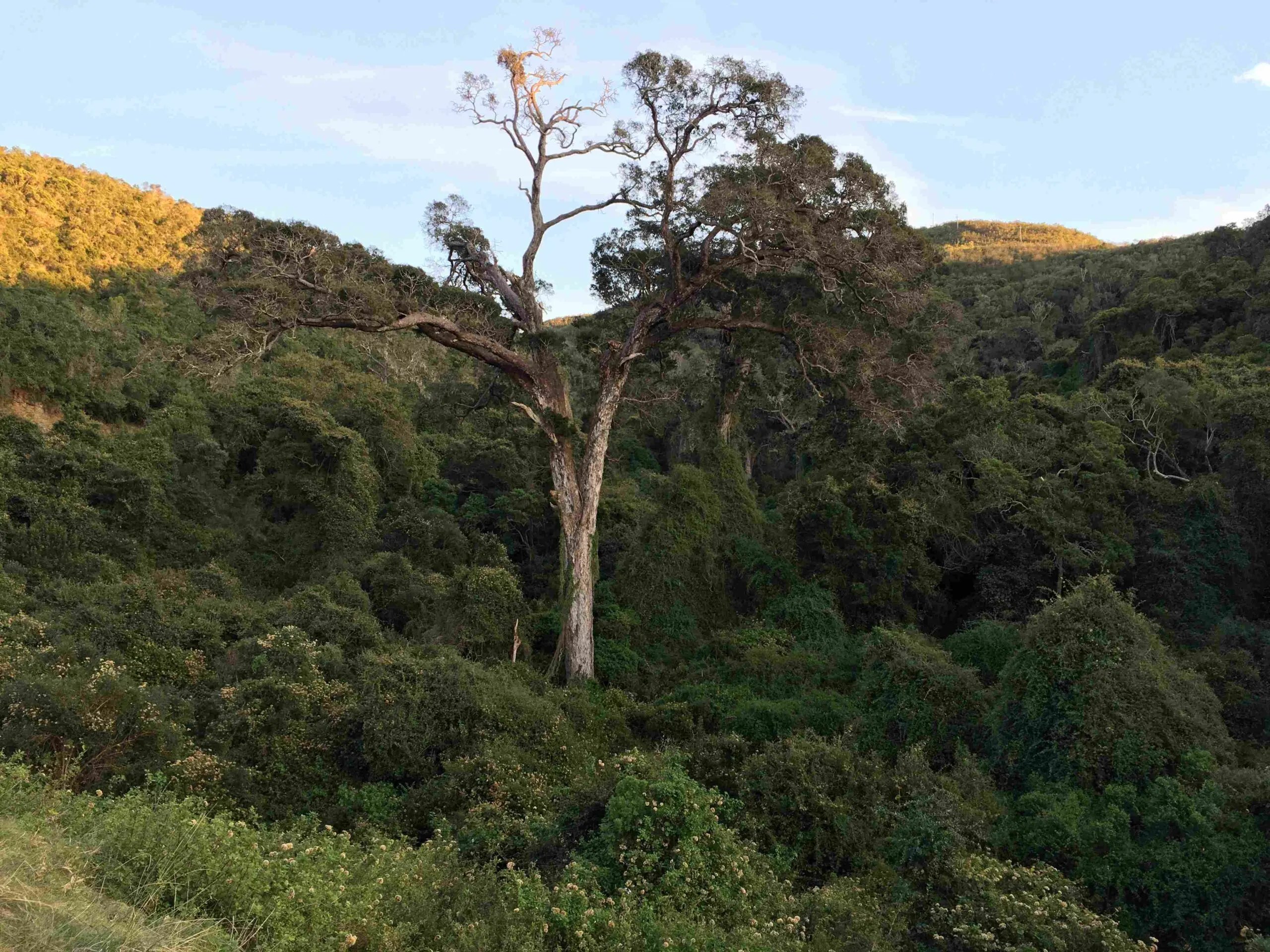
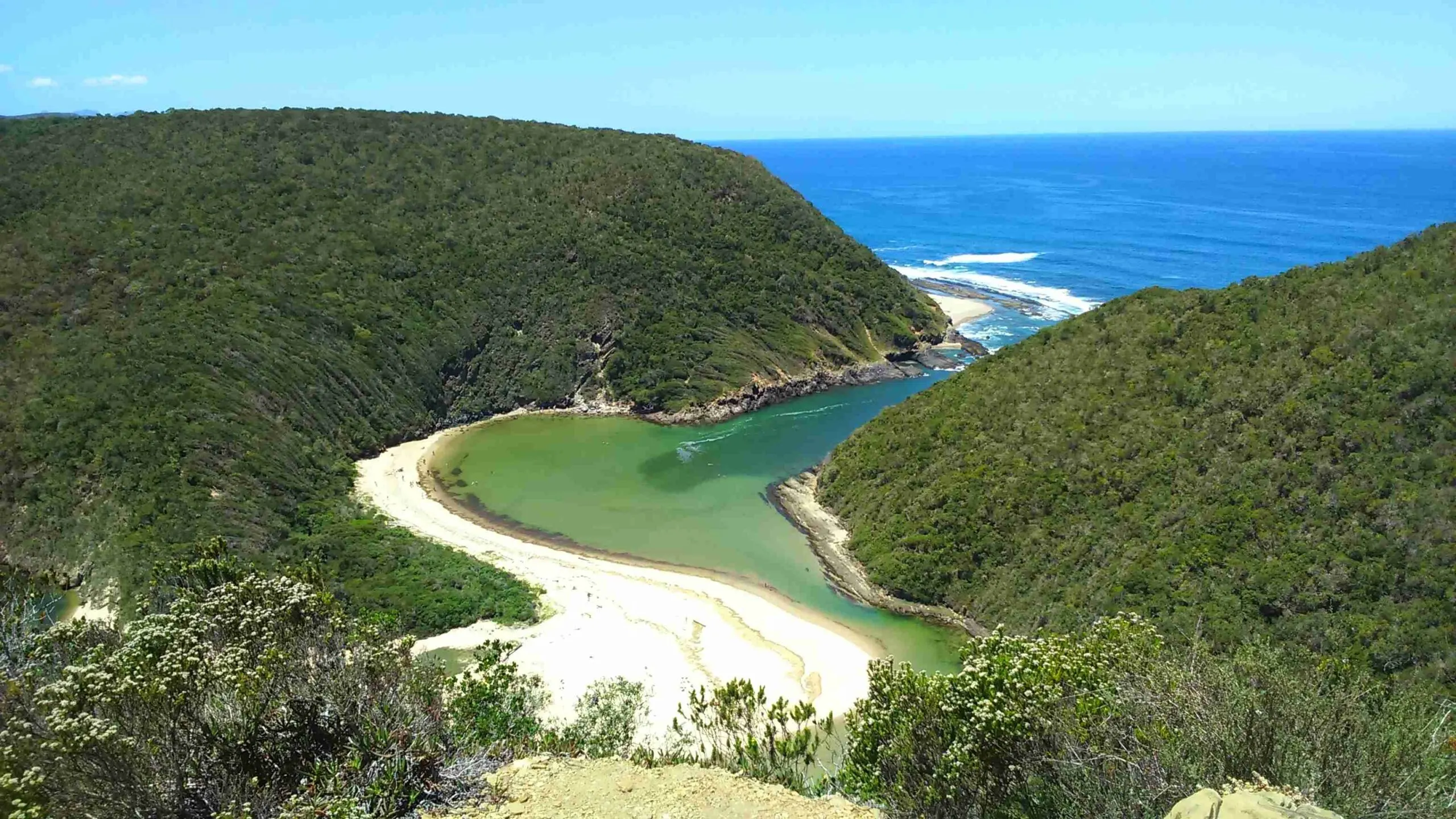
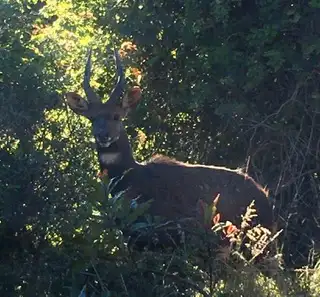
Another great place for a beach walk is Keurbooms. There’s a restaurant there, Enricos, that I’d recommend visiting for sundowners or for a delicious Italian pizza. If you feel like a walk, just ten minutes from Enricos to the east along the beach is Matjies River mouth. Nearby, a mesmerizing rock formation, Arch Rock, enthralls visitors with its unique shape.
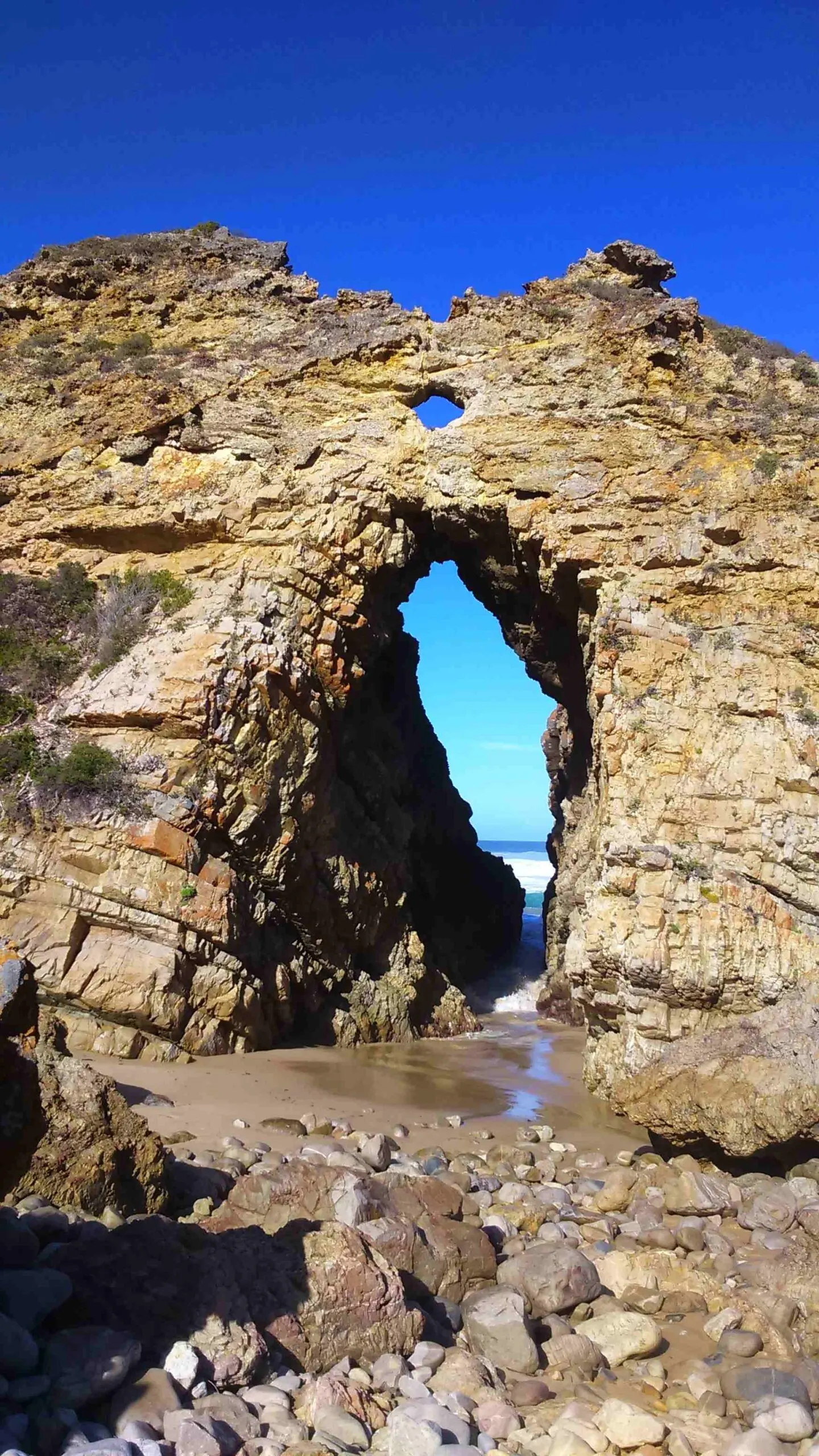
Days 9-10: Tsitsikamma, “Place of water”
Tsitsikamma is the one region that Garden Route is perhaps best known for. Here, the indigenous forests stretch across deep valleys and ravines, and onto steep mountain sides. Tsitsikamma means “the place of water” in the local khoekhoe language, and the name indeed derives from the many rivers and streams, and the high rainfall, that exist in the area. The abundant waters and the position between the ocean and the mountains, then, give rise to the majestic forests found here.
I’d recommend staying over in Stormsriver village. There are some fantastic guest houses there, such as Tsitsikamma Village Inn. There are hostels around, as well. From Stormsriver, it is easy to explore the Tsitsikamma region. I personally enjoy the hikes here the most. Some of them lead you through the mesmerizing forests. Others hug the coastline and take you over an exciting suspension bridge across Storms River, or to a tall waterfall and rock pools. There’s another attraction I’d recommend you to check out: Bloukrans Bridge and bungy jumping spot. This is one of the tallest commercial bungy jumps of the world, and an ultimate adrenalin inducing experience. The views are gorgeous, too – the jump takes place over the massive Bloukrans River gorge.
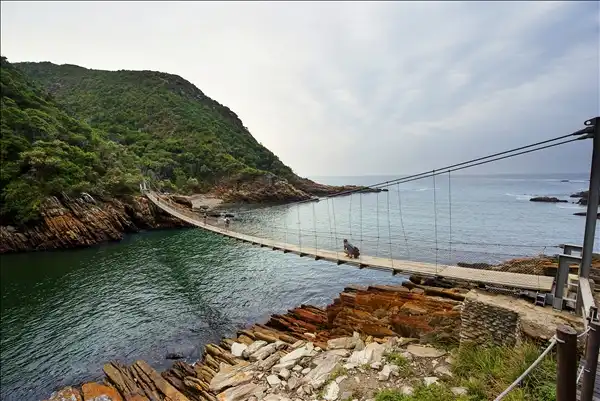
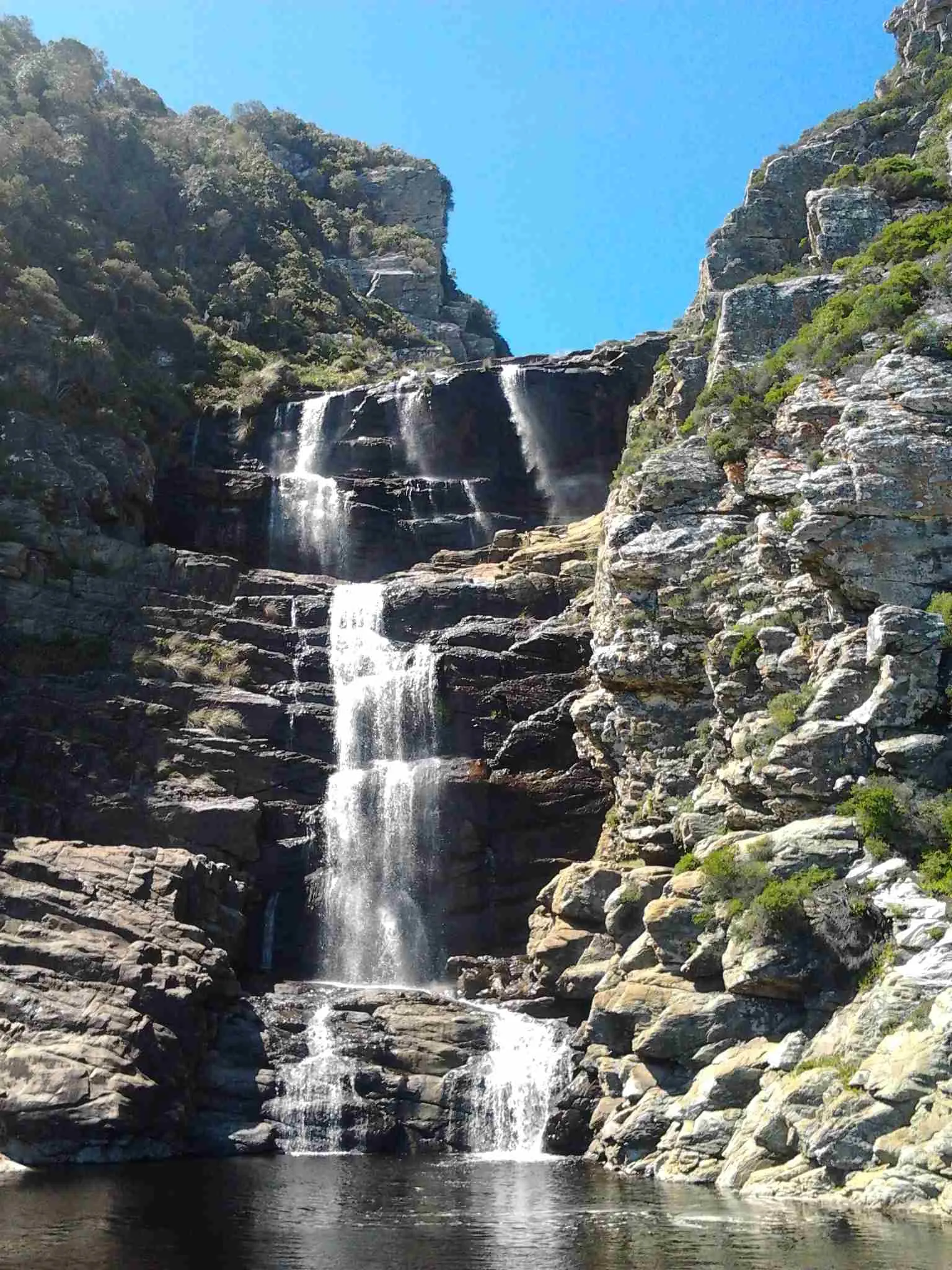
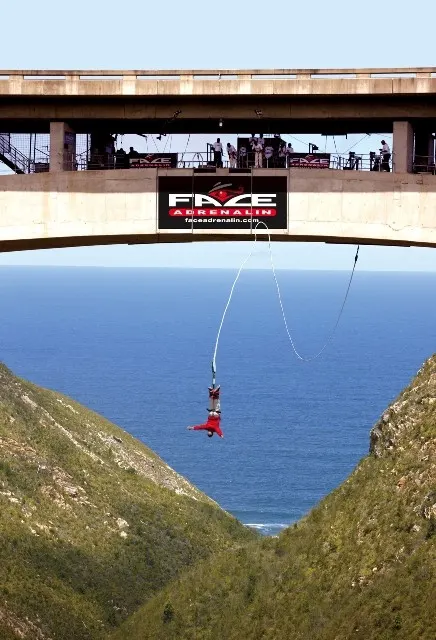
This is the end of our suggested 10-day Garden Route itinerary. After your trip, you might be returning to George or making your way back to Cape Town or Johannesburg.
However, if the adventure bug bit you hard and you didn’t have enough of the Garden Route yet, one great way to experience more of it is by walking one of the multi-day hiking trails, such as the world-famous Otter Trail. Or, you could continue your travels towards St Francis Bay or Hogsback in the Eastern Cape.
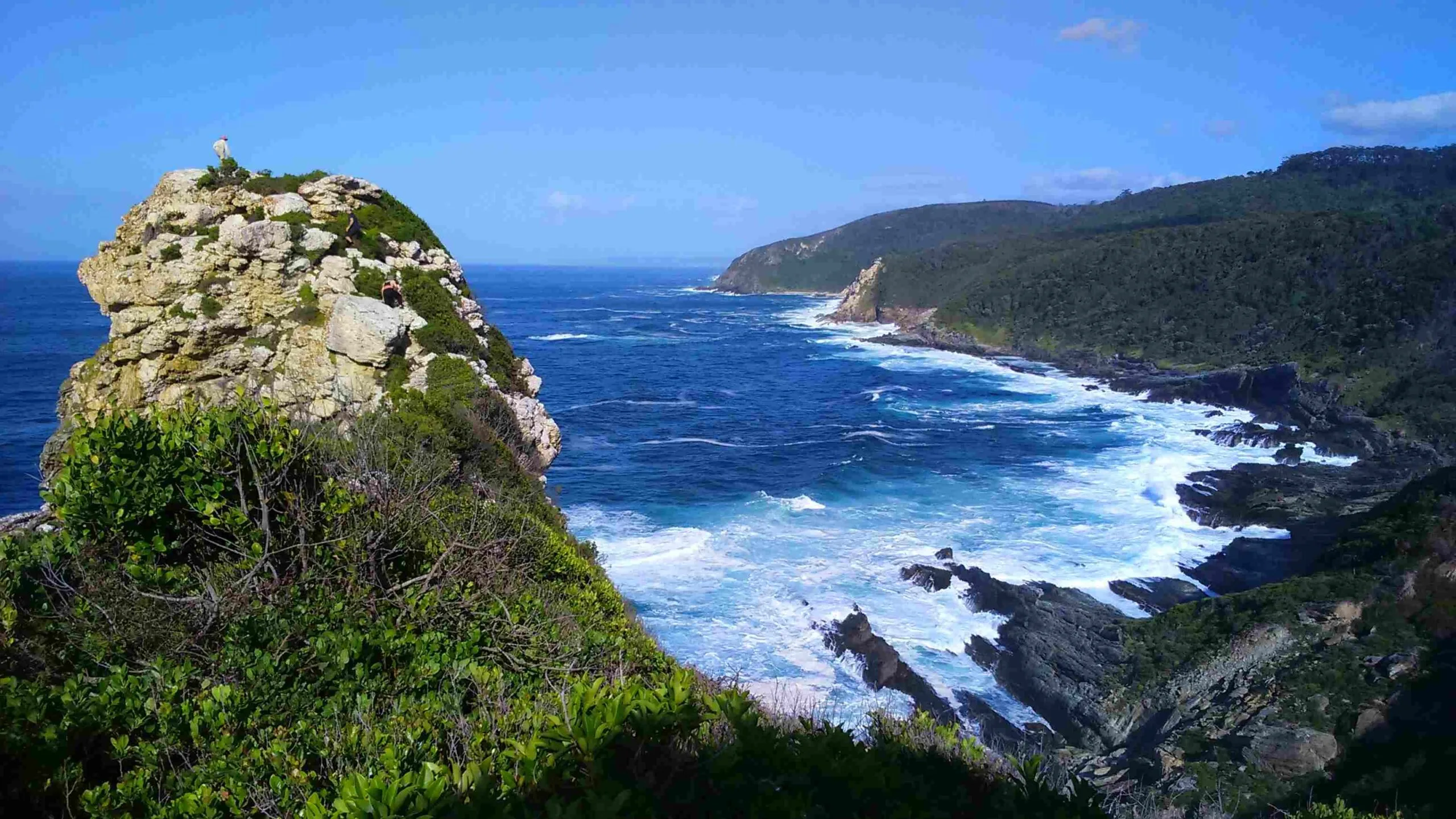
Share This Article

Traveling soon? Subscribe to The Insight below and get exclusive access to our personalized travel advice community via WhatsApp so you can ask all your burning travel questions.
Looking for the best comprehensive travel insurance? SafetyWing has you covered.
And for your eSIM in every country, there is only one option we recommend: Airalo.
Read more of our best insights from around the world
